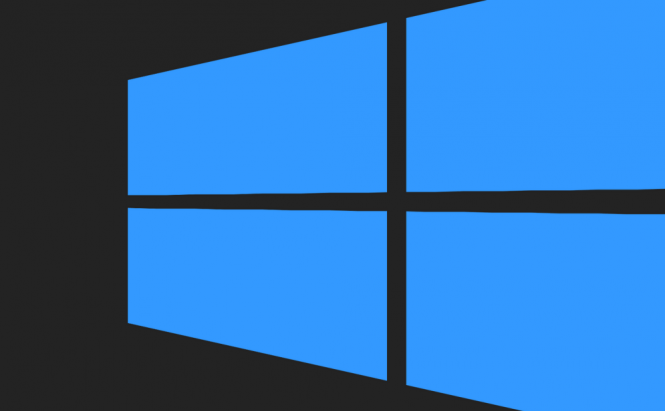 5 Tricks to Make Windows 8 More Usable
5 Tricks to Make Windows 8 More Usable
Windows 8 has proved to be all but intuitive. What's worse, it doesn't make but very timid attempts to teach us its basics, rather leaving us to ourselves and this new and bewildering world of Windows 8. That's why we decided to present you this small collection of tips and tricks to help you cope with the change to Windows 8.
The most irritating thing about Windows 8 is its mile-long learning curve. Microsoft did very little to put the total revamp of everything we have got used to after the 17 years of Windows into some halfway intelligible form, if we don't count this rudimentary thirty-second tutorial.
Figuring out things can become a horrifying task for the Windows 8 newcomers. The lack of grafting between the former-called Metro and desktop interfaces, the counter-intuitive populating of your Apps and Settings search sections, and tons of other usability issues can totally mess up impression of the new OS. And that's where you could use our (hopefully) good piece of advice.
1. Bringing the Start Menu Back
Issue: I've been using the Windows 8 Consumer Preview on my laptop since it became available this summer but I still can't help lookng for the Start Menu in the down left corner. You know, it's not that easy to unlearn something you thought was as obvious as Ben Franklin on a 100-dollar bill. Without it, searching for programs from within the Desktop interface has become crushingly tedious. Using the Start screen instead doesn't immediately come across as a legitimate alternative in quite many cases, for example if you want to launch an app stored on another disk partition or even on another hard drive.
 Windows 8 With The Start Menu Back
Windows 8 With The Start Menu Back
Fix: Using software simulating the good old Start Menu can really save your day. The two alternatives could be StartMenu8 and Classic Shell, with the former being all about customization and the latter working in a more straightaway manner. If you want to spare your time and, more importantly, nerves, installing one of these programs is strongly recommended.
2&3. Boot Directly to Desktop With Automatic Log-In
Issue: Even though I find Metro absolutely bewitching, I don't use it on my laptop really much. Actually, I tend not to use it at all. It's really not that practical, as the interface is too obviously touch-oriented. Therefore, it would make more sense to boot directly to Desktop. Yeah, and better without that annoying authentication procedure each time you fire up your PC.
Fix: This will be a bit tricky. There are quite many ways to bypass Metro, but I'll stick to the one offered by Techspot as it's much easier to grasp and do than the others. First, make sure you are running Windows as Admnistrator. Then create a Notepad file with the following text:
_echo off
C:Windowsexplorer.exe shell:::{3080F90D-D7AD-11D9-BD98-0000947B0257}
end_
After you 're done with it, save the file as .bat. The name doesn't matter. After you do this, the file icon should change. Make sure you have stored it in some safe place where you will not accidentally delete it. Then go to Metro and enter the word 'events' in the Search Panel. Choose the Settings search results and open the View event logs window. In that window click Windows Logs > Application and scroll through the opened list till you find the Winlogon information event. Right-click this event and choose 'Attach Task To This Event'. The next step will be to give the task any name you want and choose the saved script (i.e. the previosuly stored .bat file). After you have done all this, Metro will still show up for several seconds at the system launch but Windows will then automatically switch to Desktop without you taking part in this process at all.
And what about the automatic log-in? Enter netplwz in the Metro Search section and open the User Accounts window. In there, uncheck 'Users must enter a user name and password to use this computer' and provide your account credentials. From now on, you should log in automatically. If you think you need more security, just enter netplwz in the Metro Search one more time and check the authentication box.
4. Taking Screenshots Without Pain(t)
Issue: Taking screenshots in Windows used to be a nuisance. Unlike in most other OSs, you had to print the PrintScreen key, open some program like Paint, insert the picture and save it in a separate file from within that program. While you were doing it, you just couldn't shake off the feeling you were back in the Mesozoic Era, with dinosaurs and Commodores 64 browsing on grass by your side. Wonder why I talked about it in the Past? Because it is fixed now.
 The Windows 8 Screenshot Folder
The Windows 8 Screenshot Folder
Fix: In Windows 8 there's an amazingly easy way to make screenshots. All you have to do now is to press Win+PrtScrn on desktops or Win+Sound+/- on tablets. The system will make a screenshot and automatically save it in the new Screenshot folder (under you Picture library).
5. Getting Back Minesweeper
Issue: I admit, Minesweeper and Solitaire were not the biggest selling point of the previous Windows version. Yet, very few AAA+ titles could develop such a huge cult following and players' loyalty as the default Windows games. I can hardly think of any PC user who hasn't sent at least a couple of hours of their precious time down the drain playing Minesweeper. And it even has an Adventure mode! Well. Actually, this Adventure mode is really no big deal but it's still pretty exciting. There's a small hitch, however: the legendary games don't come pre-installed now.
 Windows 8 Minesweeper: The Adventure Mode
Windows 8 Minesweeper: The Adventure Mode
Fix: That's an easy one. The only thing you'll have to do is use Windows Store. Open the Windows Store app through your Metro interface and search for the good old titles like 'Minesweeper' or 'Solitaire' in there. After you locate them, just press Install and get ready for rumble... I mean, playing.
Hopefully, these few tricks will help you acclimatize to Windows 8. Anyway, the new OS is apparently Microsoft's big headliner that the company will support at all costs, so it will.
Picture Credit: WorldOfZero.com, Windows8Build.com, Techspot.com, jholu.com, Ars Technica





I have used Windows (and several other GUI based OS's) since Windows was first released, actually starting with Windows 1.0 which was more of a bolt-on to MS-DOS than anything else. I worked for a number of years in a corporate information center, where I configured IBM PC's from 8088 XT class thru Micro Channel all the way to Windows XP/Pro SP3 on Dual Core PC's. I also moved from the IC through Main Frame development to leading PC development for the entire company. Then I retired.
In my home based computing, I kept up and finally got to Windows 8 Pro. I can say without a doubt that the Modern UI is the least productive one I have ever used as an Uber Power User and Developer.